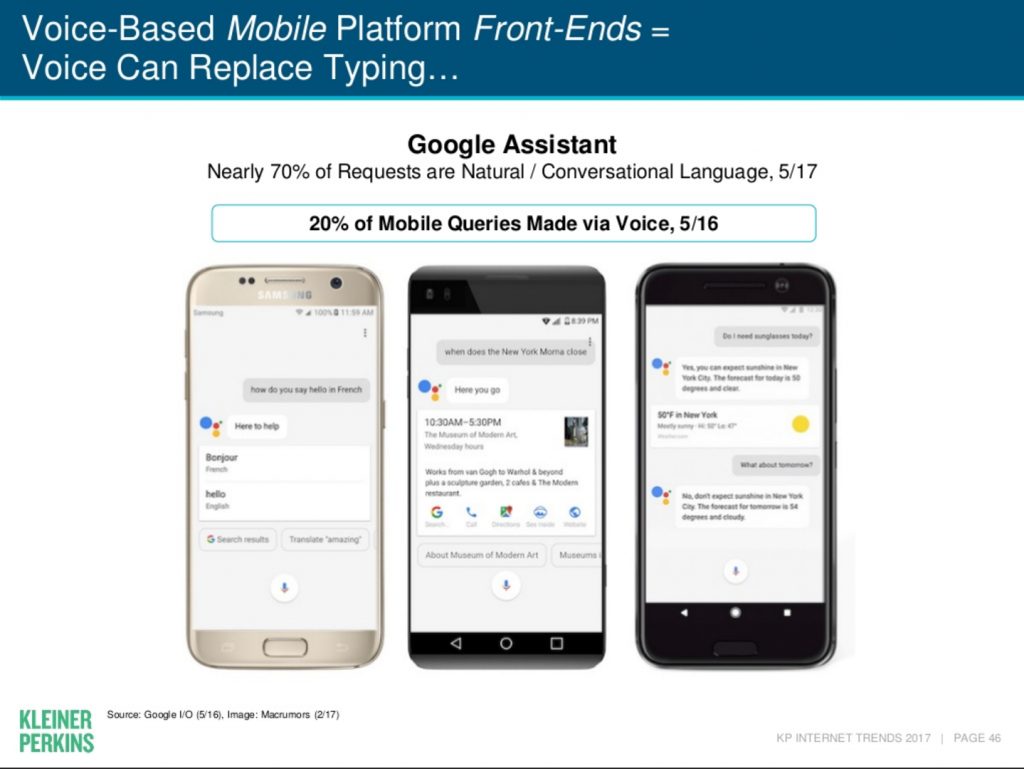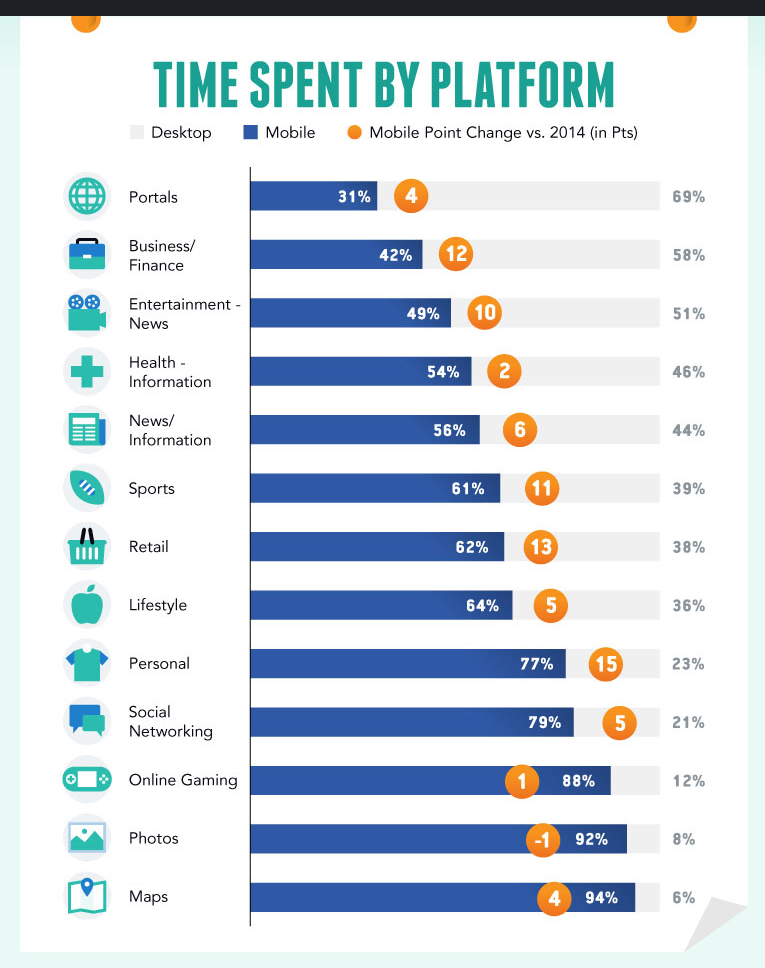
Two thorough report were recently released giving us deeper insight into how enterprises are utilizing mobile apps in 2017: Gartner’s 2017 Survey on Enterprise App Trends, and Mary Meeker’s 2017 Internet Trends Report. Let’s examine some of the more interesting revelations these reports had to offer.
1. More enterprises are creating mobile apps.
According to the 2016 Gartner survey, “39% of respondents said they had not built, customized or virtualized any mobile apps in the previous 12 months.” 2017 saw a welcome down-tick in this number to 27%. This means nearly 3/4ths of enterprises have built at least one custom mobile app and it shows that these big businesses are realizing how important a mobile strategy is in today’s market.
But there are pieces of bad news here too. First, the survey showed that IT spend on mobile apps was consistently lower than what was forecast. In a sense that’s good news: it doesn’t cost as much as you think to develop a mobile app these days, and enterprises are finding this to be true as they dive into mobile waters. However, Gartner goes on to say:
For the past few years, Gartner’s research has shown that while organizations have indicated that they will increase their mobile app development budget spend, the reality is that spending allocation has decreased.
Second, the average proportion of their overall software budget is 11%, so we’re not talking a lot here. Remember, for many enterprise companies, the mobile app is often the first point of entry. Decreasing spend to mobile development each year seems counter-intuitive to what should actually be happening, and that’s something to worry about.
2. Voice is replacing typing in online queries.

Meeker’s presentation pointed out that in 2016, 20% of mobile queries were made by voice. And in the last year, we’ve seen the rise of Amazon Echo, Google Home, and updated virtual assistants with 95% accuracy understanding human speech. This trend of voice replacing typing is only accelerating.
Enterprise companies are best poised to incorporate this trend into their mobile apps. This method of searching is what people prefer, and with the breadth of questions and queries an enterprise’s customer-base has every hour of every day, including voice search in apps would provide a better user experience.
In fact, diginomica imagines enterprises offering customizable hardware that takes advantage of this technology:
What if you could create an inexpensive system targeted to a particular task or business scenario, say a hands-free device that workers could use to execute some commands, update a Slack chat and trigger a Twilio SMS message?
Voice is faster than typing. This is an area of mobile tech ripe for innovative businesses to capitalize on, and definitely an interesting tech sector to watch.
3. Mobile ads are still a missed opportunity.

Another area highlighted by Meeker’s presentation that enterprises are best poised to capitalize on is mobile ad spending. As the slide above illustrates, users spend 28% of their media time on mobile devices, but mobile only receives 21% of the ad spend. There is a lot of opportunity here being left on the table.
TV viewership is down and fragmented. Ad blockers are ubiquitous on internet browsers on traditional devices. Mobile, meanwhile, is on the upswing. Yet businesses are still late at bringing effective advertising to where the eyeballs are going. Enterprises usually lead the charge in advertising, but here they seem to be resting on their heels.
71% of all internet consumption will be mobile in 2017 according to Zenith Media. This should serve as a wake-up call to businesses looking to reach the widest audience. Mobile apps and mobile ads should be where enterprises shift their marketing spend, and now’s the time to do it before the playing field gets too crowded.
What other insights from these two reports caught your eye?















